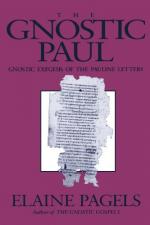|
This section contains 1,482 words (approx. 5 pages at 300 words per page) |

|
SOURCE: "Gnosticism, Feminism, and Elaine Pagels," in Theology Today, Vol. XXXVII, No. 4, January, 1981, pp. 498-501.
In the following essay, McVey explores issues of feminism in Pagels's The Gnostic Gospels.
A collection of Coptic documents discovered at Nag Hammadi (Chenoboskion) in Egypt in 1945 has shed important light on early Christianity by increasing our understanding of gnosticism. Gnosticism existed in pagan, Jewish, and Christian forms and was a major competitor with orthodox Christianity during the second century A.D. Christian gnosticism, a complex and varied movement, is nevertheless theologically distinct from Orthodox Christianity because it differentiates between the ineffable true God and the inferior Demiurge who created the material world and who is essentially identical with the God of the Old Testament. Christian adherents of gnosticism further believed that they, the "pneumatics" or spiritual people, constituted the true church over against the "psychics," ordinary Christians, and the "hylics," the material...
|
This section contains 1,482 words (approx. 5 pages at 300 words per page) |

|


